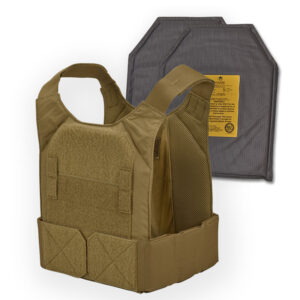Difference Between Chest Rig and Plate Carrier
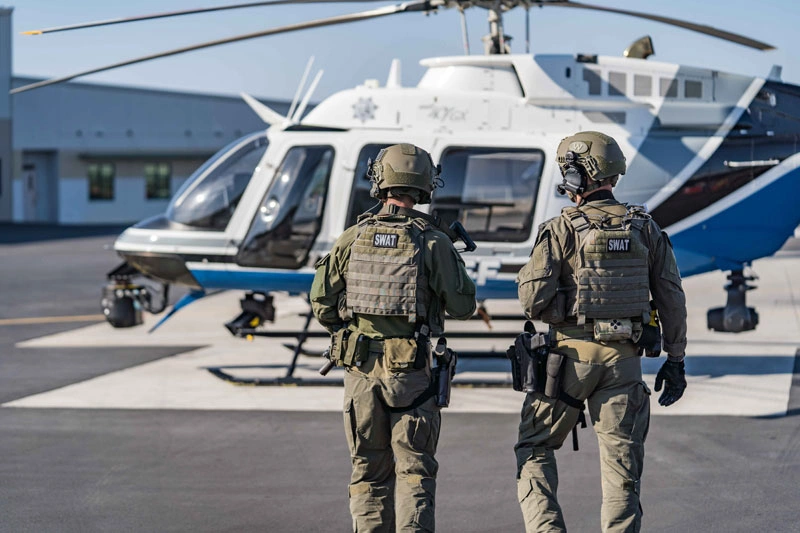
The two most commonly discussed and utilized tactical equipment are the chest rig and the plate carrier. Both enhance the functionality and efficiency of tactical missions. Whether in the military, police force, or outdoor recreation, being aware of the major differences between a chest rig and a plate carrier will enable you to make the optimal choice, depending on your requirements.
Both chest rigs and plate carriers are intended for carrying necessary gear, but vary in protection, weight, comfort, and general purpose. This blog will discuss the differences between the two tactical items and help you decide which suits your requirements.
What Is A Chest Rig?
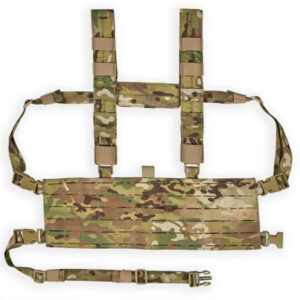
A chest rig is a light tactical vest with ammunition, magazines, medical kits, and other vital equipment. The chest rig is worn comfortably on the chest, usually over a base layer or uniform, and is made to distribute weight evenly. It is adjustable to accommodate various body types and typically has several pouches, molle webbing, or Velcro panels to hold additional equipment. A chest rig is usually preferred due to its minimalistic nature and better mobility, and it is suited for a situation where mobility is more important than protection.
Features Of A Chest Rig
Lightweight: Chest rigs are constructed using tough yet light materials, such as nylon or Cordura, so movement is not restricted.
Modular Design: Some chest rigs include MOLLE webbing, enabling users to personalize their gear loadout.
Pouch Storage: Chest rigs usually have multiple pouches and compartments for storing ammunition, medical kits, radios, and other tactical gear.
Minimal Protection: A chest rig does not provide ballistic protection, as it is mainly used to store and organize equipment.
Comfortable for Mobility: Because they are lightweight, chest rigs are comfortable to move around in for long-duration movements and are best suited for rapid tasks that don’t require heavy protection.
What Is a Plate Carrier?
A plate carrier, however, is a heavier, more protective tactical item. It is meant to carry ballistic plates, which protect against bullets, shrapnel, and other dangers in combat or high-risk missions. The carrier is a tough, padded vest that securely holds the weight of the armor plates for comfort and protection.
They provide far greater coverage than chest rigs and usually have extra pockets and MOLLE webbing for storing gear. Although a plate carrier adds weight to the armor plates, it offers the best protection for the wearer in life-or-death situations.
Features Of A Plate Carrier
Ballistic Protection: Plate carriers are built to accommodate armor plates, which are used for protection against bullets, shrapnel, and other impact threats.
Heavy-Duty Construction: Plate carriers are constructed with heavier-duty, thicker materials to support the plates’ weight and protection.
Padded Straps and Waistbands: Plate carriers are equipped with padded shoulder straps and waistbands that evenly distribute the armor’s weight across the body for comfort over prolonged periods.
Modular Loadout: Most plate carriers have MOLLE webbing or Velcro attachment points for extra gear like chest rigs.
Inhibitive Movement: Although plate carriers offer important protection, the extra weight tends to make movement more inhibitive than chest rigs.
Major Differences Between Chest Rigs And Plate Carriers
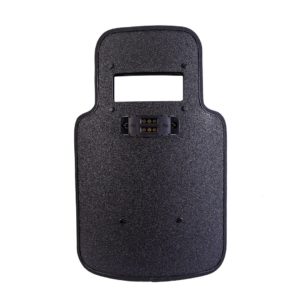
Now that we have a clearer picture of each of the distinct features of chest rigs and plate carriers, let’s discuss the main differences between the two.
1. Protection
The most visible distinction between the two is protection. A plate carrier provides ballistic protection, which is mainly used in dangerous situations. Plate carriers may carry armor plates to protect against bullets, shrapnel, and blunt trauma. Plate carriers are a part of the basic equipment for soldiers, police officers, and other individuals who deal with physical threats.
Conversely, a chest rig lacks ballistic protection. It is used simply for transporting equipment like ammunition, radios, and first aid kits without the benefits of armor plates. Chest rigs are more appropriate for less intense operations or when speed and mobility are more important than protection.
2. Weight and Comfort
Another significant difference between plate carriers and chest rigs is their weight. Chest rigs are much lighter than plate carriers, making them much easier to maneuver. The lightweight design of the chest rig provides more flexibility and less restriction, which is crucial when you have to cover a lot of ground quickly or require more agility.
Plate carriers, on the other hand, are much heavier, particularly once you include the ballistic plates. The weight may be demanding with prolonged wear, which could strain your stamina and mobility. For this reason, plate carriers are ideal for tactical missions involving protection but not necessarily rapid mobility over long distances.
3. Storage and Organization
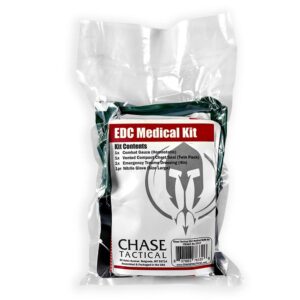
Both plate carriers and chest rigs have MOLLE webbing or other attachment systems to store additional equipment, including pouches, medical kits, and radios. Chest rigs are usually better suited for carrying smaller items like ammunition, maps, and communication devices. The pouches are typically positioned for easy access when moving.
Plate carriers generally have fewer storage opportunities because they are made more to accommodate armor and protection. Plate carriers often include side pouches, rear bags, or extra pockets to store gear, but they are generally less accommodating than chest rigs.
4. Mobility and Agility
Mobility is critical when deciding between a chest rig and a plate carrier. A chest rig is better if you are engaged in operations where flexibility and speed are crucial. Because it is lightweight and low-profile, a chest rig enables you to move more freely and quickly without being encumbered.
Conversely, while being more protective, a plate carrier restricts mobility. The extra weight and bulk hinder movement, which is a limitation in some operations, particularly those that involve long hours of walking or running.
5. Cost and Use Cases
Both gears have variable costs, though the plate carriers tend to be costlier because they offer additional protection for the ballistic plates. The ballistic plates may increase the total cost by quite a margin. Plate carriers are regarded as an investment by serious tactical personnel who require armor protection.
Chest rigs tend to be less expensive and are commonly utilized where mobility, speed, and gear organization are the primary concerns. They’re great for carrying gear at a distance, but not for protection against ballistic hazards.
When Do You Use A Chest Rig And Plate Carrier?
You can use a chest rig when you mostly need to carry and organize equipment without the bulk or weight of ballistic protection. It’s great for light tactical missions where you don’t come under direct attacks, extended walking or patrolling where you must move efficiently, or less-than-lethal pursuits such as airsoft and paintball, requiring storage and convenience. Conversely, a plate carrier is the bare minimum if defense is your number one concern, especially in more dangerous areas of operation where you’re subject to direct fire or shrapnel. It’s also the appropriate choice for combat or tactical missions that require critical protection or harsh outdoor environments where ballistic defense is needed for safety.
Frequently Asked Questions
Can a chest rig be used with a plate carrier?
Yes, most tactical operators wear a plate carrier and a chest rig simultaneously. The plate carrier offers ballistic protection, and the chest rig provides easy access to ammunition and other equipment.
Which one is more appropriate for long-range operations?
A chest rig is typically more suitable for long-range operations because of its lighter weight and greater mobility. However, you might need to compromise comfort for safety to protect yourself during the operation.
Do plate carriers include ballistic plates?
Plate carriers do not typically come with ballistic plates. They are designed to hold the plates, which must be purchased separately based on your protection level requirements.

